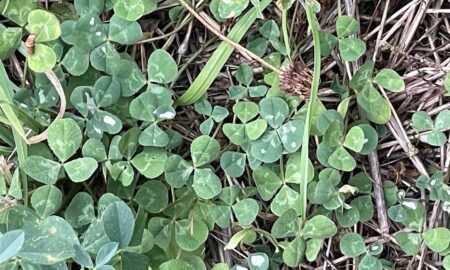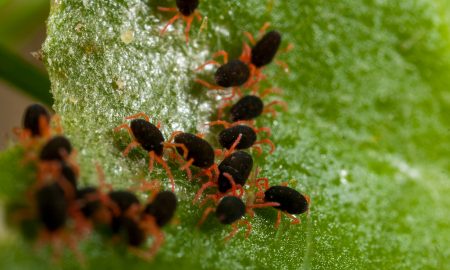We have recently received reports of very high numbers of cowpea aphid (Aphis craccivora) building up in lucerne and vetch crops is areas of Victoria’s Northern Country, and they have also been spotted in the Mallee.
The cowpea aphid has a wider host range than lucerne and vetch; they are commonly found on pulse crops including lentils, faba beans, field peas and lupins.
We encourage growers and agronomists in pulse cropping regions to keep an eye out on these establishing crops as they emerge.
Cowpea aphid identification
While there is some cross over in hosts with three other aphid species – pea aphid, bluegreen aphid and spotted alfalfa aphid – identifying cowpea aphid is relatively straightforward.
Cowpea aphid is the only one out of all four species that is dark grey to black, which makes them stand out against the green foliage.
Aphids are ‘sucking’ insects. They use their needle-like mouth parts to probe plants and feed. Under high aphid pressure, this can cause, wilting, shrivelling, yellowing and stunting.
Cowpea aphid is also a vector of several diseases in pulse and legume crops.
Cowpea aphid management
When weighing up whether to spray or not, remember that under good growing conditions, plants are better able to compensate from direct feeding damage.
If spraying is warranted, we recommend using selective insecticides over broadspectrum insecticides to preserve beneficial insects that will be much needed in paddocks to tackle not only aphids, but the various insect pests that arise throughout the winter cropping season.
Infestations of the cowpea aphid has been implicated in photosensitisation of livestock, however further research is needed on the matter. If you are concerned about photosensitisation of livestock feeding on crops and pastures infested with cowpea aphid, seek veterinary assistance for correct diagnosis and management of the condition.
For more information on cowpea aphid, visit our PestNote.
Are you seeing aphids in your crops? Let our team know what you have observed by conacting the PestFacts south-eastern team (pestfacts@cesaraustralia.com).
Acknowledgements
Thanks to the following for providing field reports and observations: Kevin Reed (Reed Pasture Science), Greg Toomey and Chris Dunn (Nutrien Ag Solutions), Alistair Ferrier (Nutrien Ag Solutions)
Cover image: Photo by Andrew Weeks, Cesar Australia





